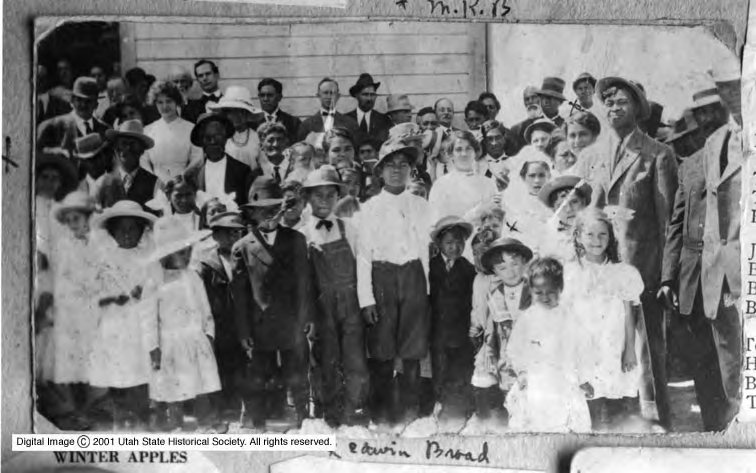We’re celebrating the month of May as Asian American, Native Hawaiian and Pacific Islander Heritage Month, and the long history of Native Hawaiians and other Pacific Islanders in the state of Utah. Utah currently ranks fifth in the United States for Pacific Islander population with roughly 50,000 Pacific Islanders calling this state home.
Pacific Islanders, namely from Hawaii, Samoa, Tonga, and Tahiti arrived in the state in the late 1800s but the history and relationship of Pacific Islanders to the Church of Jesus Christ of Latter-Day Saints (LDS) have been quite complicated and stem from a particular mission to the Hawaiian Islands in 1851.
According to the Brigham Young University Special Collections, “The son of Samuel S. and Charity Edwards Hammond, Francis Asbury Hammond was born November 1, 1822, in Patchogue, Suffolk County, New York. On December 31, 1847, he was baptized into the Church of Jesus Christ of Latter-day Saints in San Francisco, California. Throughout his life he was a successful leather worker, a trade he had learned from his father. He died November 27, 1900, in New Mexico, while serving as San Juan Stake President.”
Shortly after his conversion to the LDS Church, Francis A. Hammond was sent to Hawaii as a missionary along with his new wife, Mary Jane, where the two established a Mormon gathering place on Lana’i. In the 1860s the couple returned to the islands for Francis to serve as mission president on his second mission. According to his well-recorded journals from the mission, later that decade, Francis traveled to the west coast from his home in Utah to purchase the land that would become the site of the LDS temple, church college and Polynesian Culture center on O’ahu.

Following Francis Hammond’s missions to Hawaii, native Hawaiians and other Pacific Islanders began migrating to the United States and Utah, many connected to the LDS Church. In 1889, the colony of Iosepa was established for the benefit of Hawaiian Church Members, which soon housed 75 Hawaiians. The colony is located in Skull Valley, 75 miles southwest from Salt Lake City, and was a place for the church members to farm and worship.
In 1917, the colony closed and all residents returned to Salt Lake City and Hawaii. The only remaining vestiges of Iosepa are a cemetery and a few markers. Today, the Iosepa Historical Society is dedicated to preserving the history of the Hawaiians who settled in Skull Valley, and hosts a celebration of the town each year with descendants of its residents.
Dr. John J. Hammond, descendant of Francis A. Hammond, the father of Moab’s Fletcher B. Hammond, Sr, proprietor of Hammond & Co. Mercantile, and later, Hammond & Sons, Co. will be at the Museum on June 10 to present on his two most recent books, which document the history of the Hammond Family.
At 11 a.m., Dr. Hammond will present “Island Adventures: The Hawaiian Mission of Francis A. Hammond, 1851-1865,” focusing on the Hammond family’s time in the Sandwich Islands (Hawai’i), where the birth of F.B. Hammond takes place in March of 1855.
The public will then be invited back at 2 p.m., as Dr. Hammond will present “The San Juan Mission of Francis A. Hammond, 1883-1900” which follows the Hammond Family from Huntsville, Utah to Monticello and eventually, Moab. Francis A. Hammond was the stake president of the LDS church San Juan Stake from 1885-1900, which covered the Four Corners Area (southwestern Colorado, northwestern New Mexico, and southeastern Utah) and included Moab.
The Moab Museum is dedicated to sharing stories of the natural and human history of the Moab area. To explore more of Moab’s stories and artifacts, find out about upcoming programs, and become a Member, visit www.moabmuseum.org.




